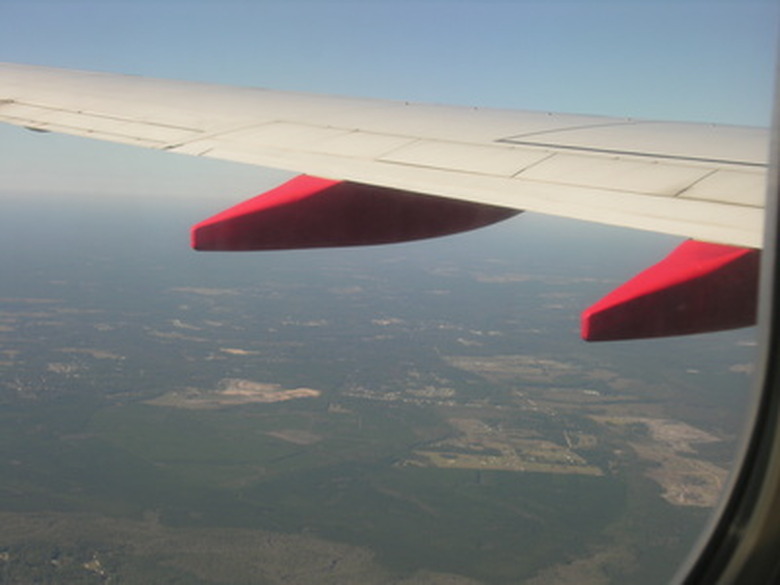How To Calculate Lift Coefficient
The lift coefficient, usually abbreviated as Cl, is a number that's used compare the performance of airfoils and wings. The lift coefficient is also one of the variables that goes into the lift equation or lift formula (see Resources). So when you solve for the lift coefficient, you're actually solving a rearranged version of the lift equation.
The Data That Goes Into the Lift Coefficient
The Data That Goes Into the Lift Coefficient
In order to calculate lift coefficient, you need several key pieces of information: You must know the area of the wing or airfoil in question, the velocity at which it's being flown and the density of the material. Usually you'll get this data from real-world testing in a wind tunnel, at which point you can reference the lift equation and, using the lift coefficient you just arrived at, determine mathematically how much lift the same wing or airfoil would produce under different conditions.
TL;DR (Too Long; Didn't Read)
There are some limitations to how the lift coefficient can be used to model effects under different conditions. In particular, the air compressibility and air viscosity in the observed case and the modeled case must be similar. If not, your results won't be accurate.
The Formula for Lift Coefficient
The Formula for Lift Coefficient
Once you have the data just mentioned, all you have to do is plug it into the formula for lift coefficient and solve. That formula is:
\(Cl=\frac{2L}{rV^2A\)
Although you might sometimes see it written as:
\(Cl=\frac{L}{qA}\)
where L remains the lift, A is still the wing area and q is the dynamic pressure, which equals 0.5 × V2.
TL;DR (Too Long; Didn't Read)
Both ways of writing the equation for the lift coefficient yield the same result; they're just written a little differently. If you want a fun challenge, use basic algebra to show that the equations are equivalent.
An Example of Calculating the Lift Coefficient
An Example of Calculating the Lift Coefficient
Here's an example of calculating the lift coefficient, using real-world data from a Boeing 747. Its lift generated is 637,190 lb; air density is 0.00058735 slug/ft3 (assuming an altitude of 40,000 ft); the velocity is 871 ft/s; and the reference area is 5,500 ft2. Inserting all of that into your equation for lift coefficient gives you:
\(Cl = \frac{2(637,190)}{0.00058735 \times 8712\times 5,500}=0.519999558\)
Cl = 0.519999558, which, depending on the parameters of your work, you can round to 0.52.
So the lift coefficient of this particular Boeing 747 model, under these conditions, is 0.52.
TL;DR (Too Long; Didn't Read)
The usual abbreviation for lift coefficient is Cl, which doesn't always show up clearly in some fonts. To be clear, it's a capital C ("see") followed by a lower-case l ("ell").
Cite This Article
MLA
Maloney, Lisa. "How To Calculate Lift Coefficient" sciencing.com, https://www.sciencing.com/calculate-lift-coefficient-7463249/. 15 December 2020.
APA
Maloney, Lisa. (2020, December 15). How To Calculate Lift Coefficient. sciencing.com. Retrieved from https://www.sciencing.com/calculate-lift-coefficient-7463249/
Chicago
Maloney, Lisa. How To Calculate Lift Coefficient last modified March 24, 2022. https://www.sciencing.com/calculate-lift-coefficient-7463249/
